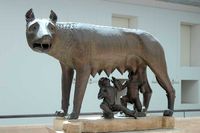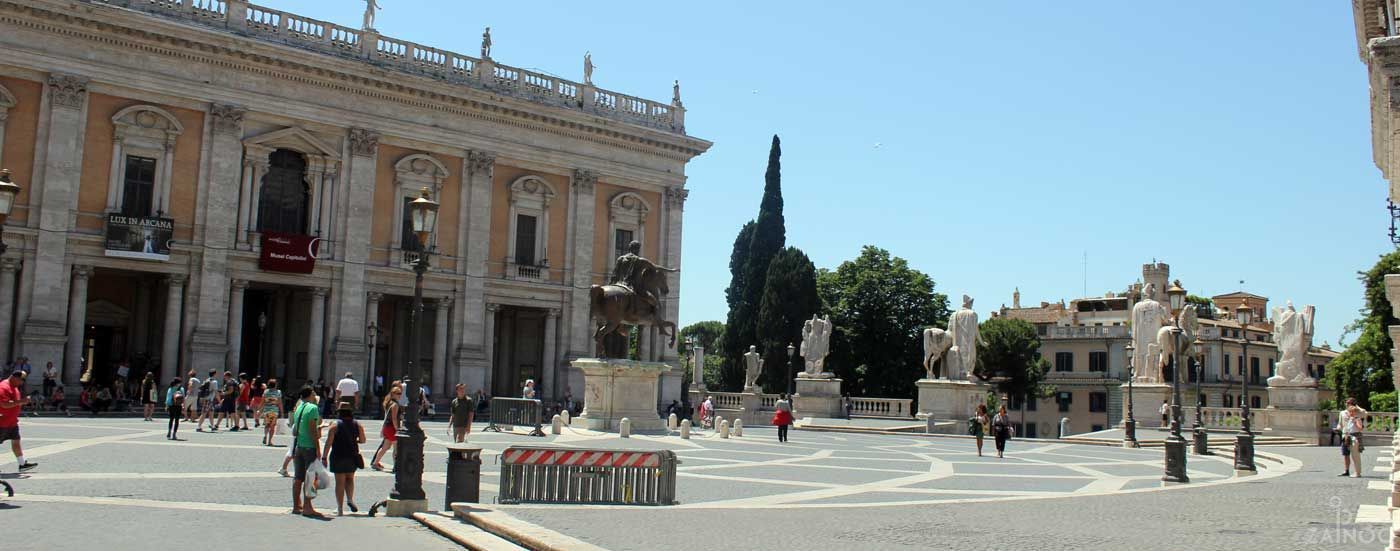Capitoline Museums
Museum
Musei Capitolini - the Capitoline Museums
Remarkable collection of art in the centre of Rome
The Capitoline Museums are based on the first museum of ancient times by Pope Sixtus IV in 1471. They extend beyond the Palazzo dei Conservatori, the Palazzo Nuovo and the Tabularium in the Palazzo Senatorio, which are all connected by underground passageways.
Attractions in the Palazzo dei Conservatori
The Palace of the Conservators is located directly above the ancient temple of Jupiter and contains some of the most famous and important works of art of Rome. The early Baroque palace was built by Giacomo della Porta as the seat of the conservators in 1575 and is still used for promotional receptions.
Besides many other works of art and sculptures, one of the highlights inside is the "Capitoline Wolf" in the Sala della Lupa. The bronze female wolf from the 5th Century B.C. was made in an Etruscan workshop and originally had nothing to do with the founding myth of Rome. The figures of Romulus and Remus were not added until the 15th Century and made the wolf one of the most famous landmarks of the city. The Sala delle Oche is dedicated to the geese, which preserved Rome from the invasion of the Gauls in 387 B.C. There are three further highlights worth seeing in an extended section: the gilded equestrian statue of the Emperor Marcus Aurelius, the gilded bronze figure of Hercules as well as fragments of a 12 metre high giant statue of the Emperor Constantine.
Pinacoteca Capitolina and Tabularium
The Capitoline Art Gallery on the second floor of the Palace of the Conservators houses numerous paintings from the 14th to the 17th Century. In the nine halls, there are notable paintings such as "The Holy Family" by Dosso Dossi, the "Baptism of Christ" by Titian, the "Rape of Europa" by Veronese, "Saint Sebastian" by Guido Reni, "John the Baptist" by Caravaggio, the "The wolf with Romulus and Remus" by Peter Paul Rubens, a self-portrait of Velázquez and the famous "Rape of the Sabine Women" by Pietro da Cortona.
In the passage between the Palace of the Conservators and the New Palace you will reach the Tabularium under the Senatorial Palace. On display here you can see the remains of the State Archives of the Roman Republic from the consul Q. Lutatius Senatorio.
Attractions in the Palazzo Nuovo
The New Palace (Palazzo Nuovo) was built after the model of the Palace of the Conservators by Rainaldi in 1603. Besides the sarcophagus with scenes from the life of Achilles on the ground floor, it’s also worth checking out the doves mosaic on the upper floor. The finely crafted mosaic originates from Hadrian's Villa in Tivoli. Also worth seeing is the Capitoline Venus, a Roman marble statue of the naked goddess, based on the Knidian Aphrodite by Praxiteles. In addition to numerous busts, statues and sculptures of Roman and Greek gods and personalities, the "Dying Gaul" in the Sala del Gladiatore deserves special attention. This Roman marble copy was modelled after a dying warrior for the victory monument of King Attalus I of Pergamum from the 3rd Century B.C.
Entrance
€ 11,-










Tweet